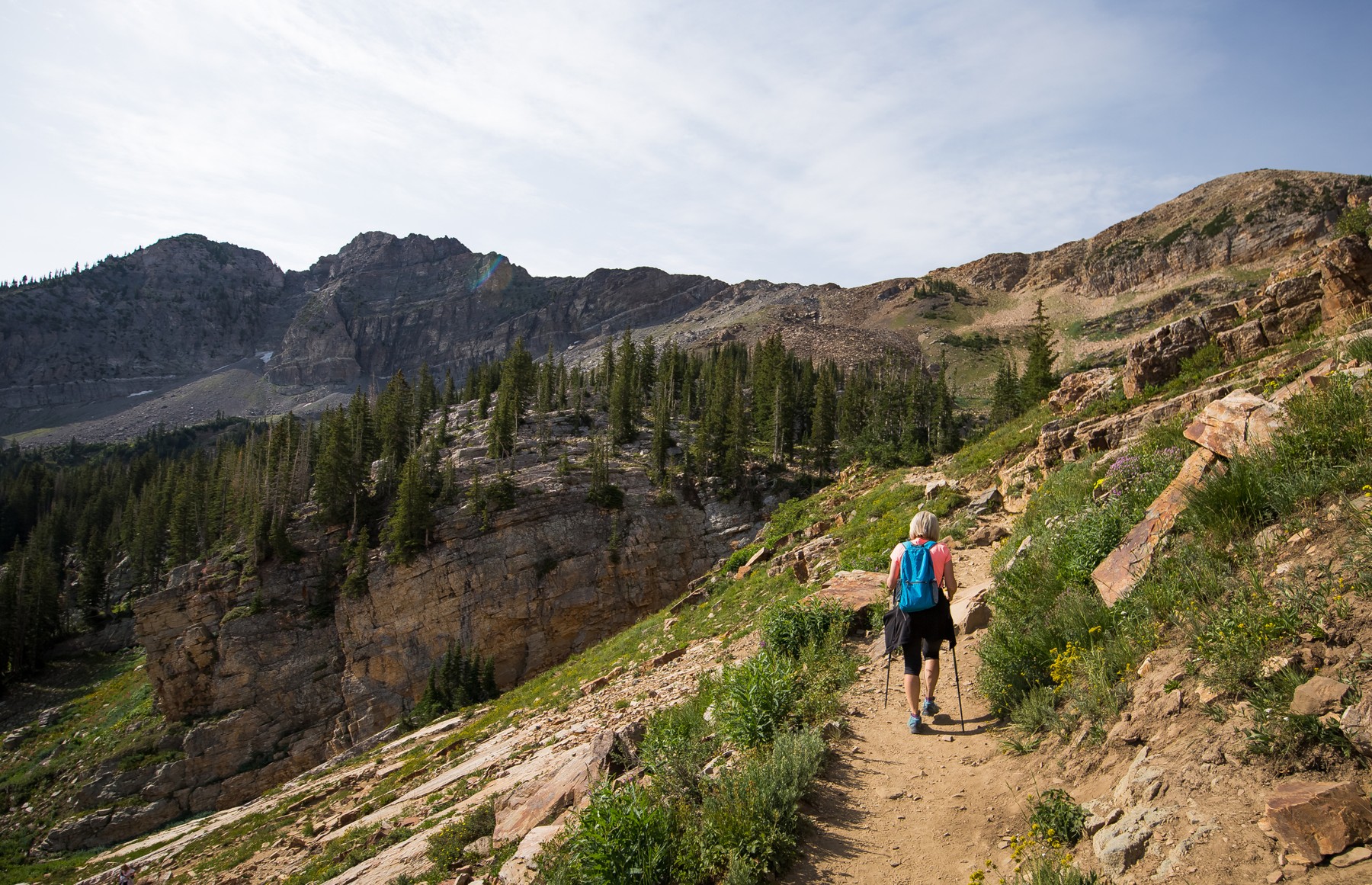For me, it always starts off with a gentle but nagging feeling of frustration. I get annoyed that I can’t keep up with my friends or that I’m not pedaling as hard as I should be able to despite the training I’ve been putting in. Then, the thoughts of little snacks that sound extra tasty start to creep in. Gummy bears? Muffins? Bars? Tacos? They all sound quite delectable. Next thing I know, it feels like I’m dragging a 100-pound weight behind my bike, and I realize that I’ve hit the dreaded “bonk.” That forsaken part of the ride when I just wish I had stopped earlier for a snack rather than having to halt my day to eat what feels like an entire meal.
In sports, especially endurance activities like cycling, running, or hiking, "bonking" (also known as "hitting the wall") refers to a state of extreme physical and mental fatigue. This occurs when the body's glycogen stores, which are the primary source of energy for sustained physical activity, are depleted. Symptoms of bonking include dizziness, confusion, weakness, and an inability to continue at the same level of intensity. Proper nutrition and hydration strategies are essential to prevent bonking, including regular intake of carbohydrates before and during exercise to maintain energy levels.
To delve deeper into the nutritional needs of mountain athletes and how to avoid bonking, I sat down with Lucy Mower, MS, RDN, CD, an Outpatient Clinical Dietitian with University of Utah Health. Lucy specializes in working with patients and athletes to personalize their nutrition and dietary patterns to fit their lifestyle and training. Outside of work, she enjoys Utah’s endless running and biking trails. Through our discussion, Lucy shared invaluable insights on how mountain athletes can optimize their nutrition for performance and recovery.
What are the key nutritional needs of mountain athletes?
Mountain athletes have individualized nutritional needs based on their level of activity, training schedule, and overall health. There is no one-size-fits-all approach to fueling, so it's important to experiment and adjust as needed. Key nutrients for these athletes include:
- Carbohydrates are the main energy source for the body, essential for fueling training sessions and competitions. High-quality carbohydrate sources include whole-grain bread, oatmeal, brown rice, fruits, lentils, quinoa and sweet potatoes.
- Proteins are crucial for muscle repair, recovery, and growth, as well as for sustaining fullness between meals. Good protein sources include lean meats, and plant-based options like beans, lentils, nuts, seeds, fish and dairy.
- Antioxidant-rich foods help neutralize free radicals produced during intense exercise, reducing muscle soreness and fatigue. Foods high in antioxidants include berries, cherries, leafy greens, nuts, broccoli, artichokes and tomatoes.
- Beneficial fats provide long-lasting energy, protect organs, and help absorb vitamins A, D, E and K. Healthy fat sources include avocados, olive oil, nuts, nut butters, eggs, seeds like sunflower, chia and flaxseeds, and oily fish like salmon, trout and sardines.
- Hydration is critical for athletes. As you sweat, you lose fluids and electrolytes, so drinking plenty of water before, during, and after physical activity is essential. Other hydration sources include electrolyte drinks or tabs and foods with high water content like watermelon or cucumber.
For more information on a basic balanced diet go here: https://healthcare.utah.edu/documents/balanced-plate
How does altitude affect nutritional requirements?
Higher altitude environments increase an athlete's need for several key nutrients. First, energy (calories) needs are higher due to the increased energy expenditure in a lower oxygen environment. Carbohydrates are crucial for sustaining energy levels under these conditions. Hydration and electrolytes are vital, as the risk for dehydration is higher at altitude due to increased respiratory rates. Antioxidants are important to combat the oxidative stress that high altitude can cause. Vitamin D supplementation may be necessary if sun exposure is limited. Additionally, when at very high altitudes for prolonged periods, iron is needed to help the body produce more red blood cells to compensate for the lower oxygen levels.
How far in advance should mountain athletes eat before starting an activity?
A carb-rich meal two to three hours before an event (e.g., a bowl of oatmeal with blueberries and crushed walnuts) and a smaller, easily digestible high-carb snack about an hour before (e.g., a banana or apple slices) are ideal. Carbohydrates are the body’s main energy source, and our brain and muscles require glucose (the broken-down version of carbohydrates) to function properly. Consuming foods with carbs before activities will allow for sufficient fueling. These include fruits, vegetables, potatoes, bread, tortillas, pasta, rice, and grains.
What are the best types of snacks for mountain athletes to consume during their activities?
The ideal composition of snacks for fuel during long outings involves carbohydrates (30-90 grams per serving). Simple options include shot blocks, gels, fruit snacks, and similar items. Some people also enjoy a small amount of fat or protein, which can help sustain the energy provided by carbohydrates. Examples of this include dried fruit with a nut/seed mix or a bar that contains dried fruit and nuts, like an RX bar, or Kate’s Real Food.
Typically, mountain athletes participating in endurance training will start their training fueled with a meal or snack within 1-3 hours beforehand. They then consume foods with quick-acting carbohydrates every 30-60 minutes during sustained exercise. For example, an ultra-endurance runner might bring various chews, blocks, and other products to supply fuel throughout their run.
Lucy states; for long mountain bike rides or backcountry ski days where pack space may be more ample (more than 4-5 hours on the trail), I often bring a combination of the following: one Go-Go squeeze pouch, one or two mini That’s It fruit bars, one or two sleeves of Shot Blocks, one Bobo’s or small bar, and something salty like pretzels or crackers (depending on available space). Lastly, I ensure I have plenty of water (2-3 liters and 16-24 ounces with a hydration mix like Skratch).
For backcountry skiing, I also bring a warm beverage (tea, apple cider, or even miso soup) if I can fit it in my pack because hydration can be forgotten when it’s cold out, but it is still crucial as we still lose sweat from respiration. For long trail runs, my fueling simplifies a bit to avoid gastrointestinal upset—mostly blocks, That’s It bars and a Go-Go squeeze. This is also because space is often more limited for runs. I often don’t have space to bring a bottle with a hydration mix and therefore will bring blocks that have extra sodium.

What is the best way for mountain athletes to refuel after a strenuous activity?
If unable to eat a meal within one hour, it’s best to have a mix of protein and carbs to aid in recovery (e.g., a protein shake with fruit, or fruit and nuts/seeds) about 30 to 60 minutes after activity, followed by a well-balanced meal within a few hours.
How does altitude impact hydration needs?
Altitude increases respiratory rate and therefore loss of fluid. Athletes may also lose more fluid through increased urine production at higher altitudes. They often expend more energy at altitude, resulting in greater sweat production. Lastly, there may be a reduction in thirst sensation at altitude. Mountain athletes should be aware of dehydration signs such as nausea, vomiting, fatigue, dizziness, increased heart rate, confusion, muscle cramps, headaches, and dark or decreased urine output.
Proper nutrition and hydration are essential for mountain athletes to prevent the dreaded bonk and optimize their performance. By understanding and addressing their unique nutritional needs, athletes can enjoy their endurance activities without hitting the wall. My conversation with Lucy Mower provided invaluable insights into how mountain athletes can fuel their bodies effectively, ensuring they can keep up with the demands of their sport and avoid the frustration and fatigue that come with bonking.
If you liked this article and found it helpful, stay posted this winter for Lucy’s insights on how to optimize nutrition for a day out on the slopes, backcountry skiing, or cross-country skiing.
Disclaimer: The insights and information provided in this article are intended for educational purposes only. They are not meant to substitute professional medical advice, diagnosis, or treatment. Always consult with your healthcare provider before starting any new physical activity or exercise regimen.
Content sponsored by University of Utah Health















